
Suzuki Ignis SUV (2017-2025) long-term test
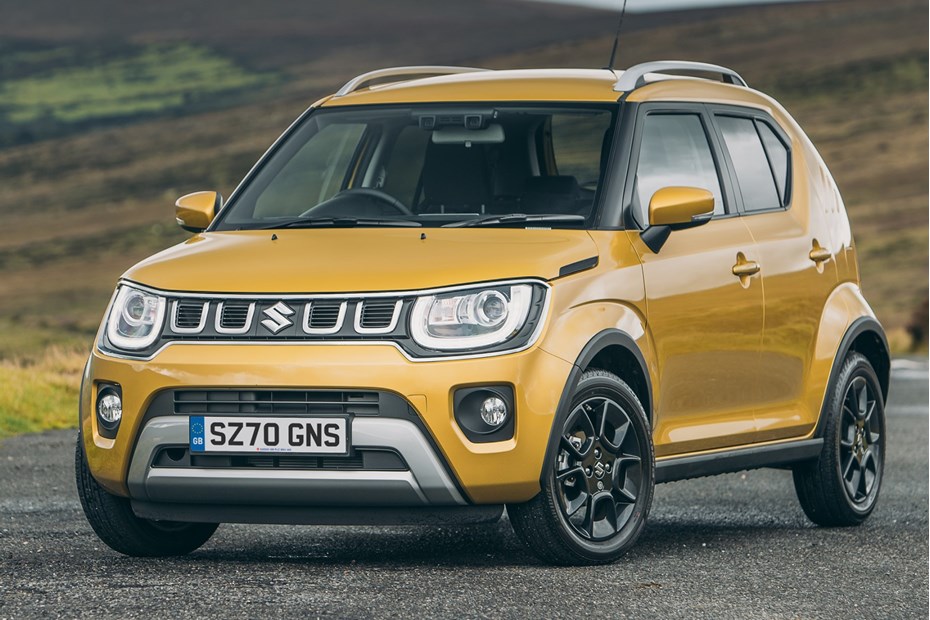
Jump straight to Update 10 as we take the Ignis on the ultimate road trip from Land’s End to John O’Groats
Update 1: Welcome to the fleet, Ignis!
Out of all of the cars to pass through our hands this year, the Suzuki Ignis has been the one that’s polarised opinions the most. It really is the epitome of ‘Marmite’ cars, with some of the team loving it – and others, shall we say, not quite understanding it.
The mini-SUV was launched in 2016, went on sale in January 2017, and with its choice of two- and four-wheel drive combined with funky styling, it’s been attracting attention.
According to Suzuki, between the beginning of January and the start of March, 1,650 have found new owners – which is an impressive achievement for a model that’s not been on sale in the UK since the early 2000s. So, clearly there’s been plenty of interest, and that’s why we’ve added one to the long-term test fleet.
So, which one did we plump for?
We’ve gone for the SZ-T model, which Suzuki says is the most popular one in the range. It was priced at £11,499 at the time of writing, and our model is fitted with just one option – its pearl pure white paint finish, which adds £465 to the final bill.
.jpg)
Standard equipment is pretty generous, and here’s a run-down of the most important kit that it comes with:
What’s it likely to cost to run?
This one promises to be pretty light on the pockets, although not as cheap as some of its rivals, like the Volkswagen Up or Fiat Panda Twin-Air. On the outgoing tax system, it misses out on being free of VED, with an emissions rating of 104g/km.
If you buy before 1 April, it’s £20 per year – after that, it’ll go up to £140. The official fuel consumption figure comes up as 61.4mpg (combined), which even accounting for the difference between laboratory and real-world fuel consumption figures, should see us cracking more than 50mpg with care.
Problem is that it’s such a hoot to drive, driving with fuel consumption in mind might be difficult in the coming months.
First impressions?
Although it came with delivery mileage on the clock, and we’ve just started using it, the Ignis is already winning friends among the team. And beyond it. Editor Keith Adams loves its peppy engine and willingness to keep up with the flow, while deputy road test editor Adam Binnie laughed when he took it round a series of bends.
Nathan Chadwick, assistant editor of sister magazine Modern Classics has taken it for a spin, too. Given he’s 6ft 5in tall, and ‘powerfully’ built, we were quite keen to see how he fitted in this pint-sized car. In the end, he posed no problems for the Suzuki – a fact that surprised and delighted us.
.jpg)
Our only early reservation is the fact it’s white. Given there are some pretty lairy colours available, this seems like a bit too much of a ‘safe’ choice to us. Other than that, first impressions are all good.
So, if you’re tall, looking for a fun small car styled with a nod to the past, and one that’s reasonably cheap to run, you know where to come. Stay tuned for more updates.
Keith Adams
Mileage: 1,100
Fuel consumption: N/A – first report

Update 2: Getting to know you…
We’re getting to know the Ignis here at Parkers, although we haven’t taken it on any long journeys yet. So far, it seems to be a fun drive, with a nippy engine, not much body roll, and it certainly attracts glances from onlookers.
Friends have commented on the appearance of the Ignis, which is very different to the usual SUV or city cars – this is a real cross between the two, and only some serious time spent behind the wheel will explain its purpose in life.
The interior is basic and no-frills, with my favourite feature being the bright orange metallic door handles (below), matching the centre console – the pop of colour seems a bit random, though, as it’s not picked up anywhere else in the interior or exterior. There’s a lot of scratchy plastic, plus the occasional burst of fake carbonfibre material, such as round the air vents.
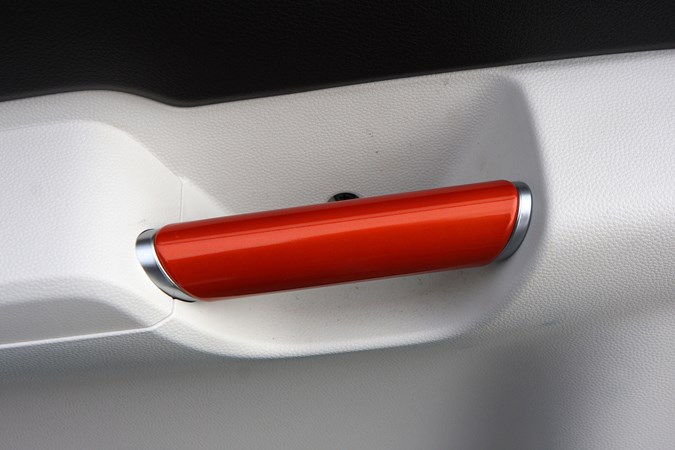
The gear box seems to make its own mind up about which gear you’d like to pick occasionally, and third gear seems to change position every time I drive it. I’m yet to be charmed by the infotainment system, and the volume button on the steering wheel feels like an extra from a Lego set. I’m convinced it might fall off when Bohemian Rhapsody comes on the radio and I want to turn it up to 11.
The seats are comfy, but made only of foam, and therefore aren’t very supportive.
On the warmest day of the year so far (spring has sprung!) I was very glad of the efficient air-con; however, this car is not a fan of wind. Having an Ignis on a windy day is like having long hair on a windy photoshoot – utterly hopeless. It is not great when there is any hint of a crosswind – it feels decidedly floaty, very light, and threatens to fly away under any gust of wind. Good job I wasn’t driving this during Doris.
One curious discovery was made when changing the clocks for British Summer Time. I changed the clock on the infotainment screen, but that and the clock on the dash aren’t linked – and after spending five minutes trying to find out how to alter the dash clock, I gave up. Instructions in the manual paid no relation to real-life, so for now I’m living in two time zones.
What additional options are there for the Suzuki Ignis?

Choose from 11 paint options, from Pure White Pearl (the colour of our long-termer), to Flame Orange Pearl Metallic, and two-tone Fervent Red. Solid colours cost £465, while the two-tone options cost £650 each.
There are lots of options to add on to your Ignis, to personalise your car and really make those fun colours pop.
You can also choose the automatic engine, for £800.
Sophie Knight
Mileage: 2,800
Fuel consumption: 27.4mpg
Update 3: Do we have the best engine?
We’ve had our Suzuki Ignis for a few weeks now and are slowly getting to know its good and bad points. But what of the 1.2-litre petrol engine under the bonnet? And what other options are available?
As regular readers will know, our car is fitted with the 1.2-litre petrol engine, producing 90hp and returning claimed economy of 61.4mpg. However, should you want a touch more performance, economy and off-road flexibility, there’s another, pricier option. Namely the 1.2-litre SHVS 4W hybrid version.

Smart Mild Hybrid System and four-wheel drive
Nope it made no sense to us either, especially since power and torque figures are identical to the 1.2 2W. A quick bit of research revealed that SHVS stands for Smart Mild Hybrid System, with the 4W signifying all-wheel drive.
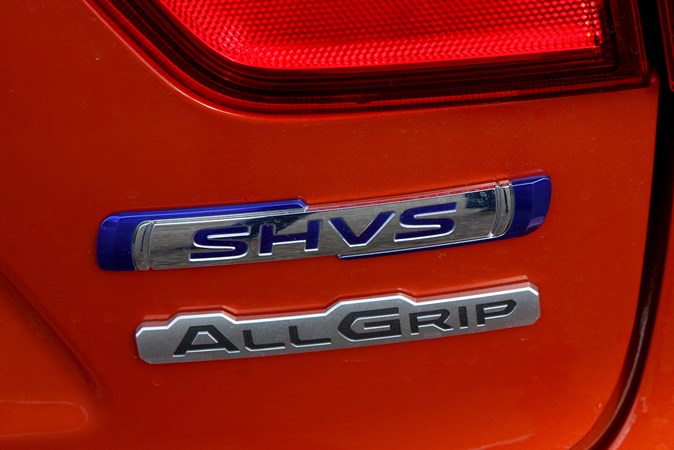
The latter brings extra mud-plugging ability and while the former should make the Ignis more frugal, the economy-denting all-wheel drive has more of an impact, with claimed economy dropping from 61.4mpg to 60.1mpg and CO2 emissions rising from 104g/km to 106g/km.
Top tip – get the regular front-wheel drive SHVS car and emissions actually dip to 97g/km of CO2, with economy rising to 65.7mpg.
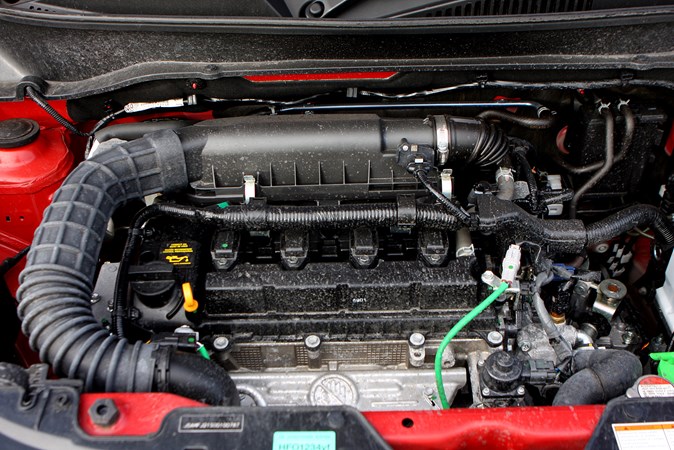
The mild hybrid system works by providing the car with electrical assistance from onboard lithium ion batteries as it pulls away. You don’t need to recharge the car either, with the batteries being recharged when the car decelerates.
However, before you rush off and buy one it’s worth noting our concerns over the inferior ride quality of the hybrid model, and the less enjoyable engine characteristics. It’s also £1,500 more expensive than our SZ-T spec car.
Added standard safety kit
It’s also worth pointing out, though, that the top-spec SZ5 model – the only one in which the SHVS hybrid is available – is the only spec to come standard with Dual Camera Brake Support. This incorporates both lane-departure warning and autonomous emergency braking. As a result, the Ignis’ crash rating for models fitted with this kit increases from 3 to the maximum 5 stars.

So, would we swap our 1.2 2W Ignis for the pricier SHVS 4W car. No – we wouldn’t. Unless you need the all-wheel drive for some added off-road ability, it’s simply not worth the extra money, or the firmer ride.
And for those concerned about the three-star safety rating without Dual Camera Brake Support? It’s available as an optional extra on SZ3 and SZ-T models.
James Dennison
Mileage: 3,731
Fuel consumption: 40.8mpg
Update 4: How does it cope on motorways?
We’ve lent our Ignis to Nathan Chadwick from our sister title Modern Classics, to get his views on this little SUV.
The Suzuki Ignis is very pleasing to the eye, a wonderful change to the amorphous blobs that seem to look the same just with different badges that you see on the roads these days.
With skinny tyres, a wheel at each corner, a small-capacity engine and light weight, it piqued my interest as a diamond B-road fizzer in the rough. But it really isn’t – there’s not much urge past 4000rpm. And if you drive it too hard into a corner you’re likely to end up in the passenger footwell – there’s no lateral support whatsoever.
The upside of that is that there’s plenty of room for legs, heads, knees and shoulders. I’m 6ft and there was a fist’s worth of space above my head.
Cheap and cheerful?
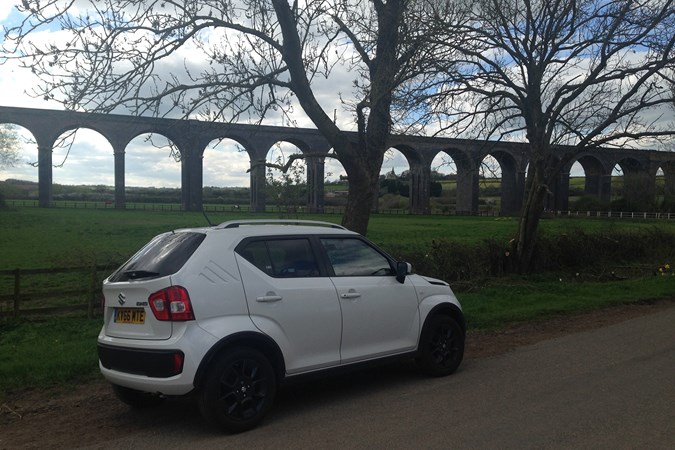
The build quality is questionable. Although we appreciate that this is a 10-grand car, and that sacrifices have to be made, there’s no excuse for the floor-mounted centre console to move so easily from side to side. Pull the door handles and the entire unit moves in and out like a bellows.
Gearshift is precise, light and easy to place – an absolute joy and other than the looks, the best bit of the driving experience.
Only good in the city?
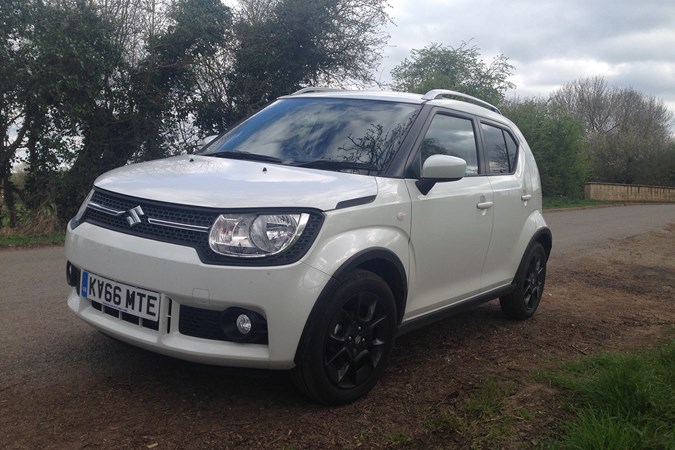
As expected from a city car it’s sprightly up to about 4000rpm, but it becomes rather laboured after that. This is important to note. It’s not simply the case to dismiss its lack of power as ‘it’s a city car’. These days if you want to get around most cities, public transport is cheaper and easier to use, and you don’t have to worry about a garage and a parking space.
No, if you want a city car it has to be capable of doing the short journeys most of the time, but it also has to be good at the occasional foray out of the urban sprawl.
It’s here where the Ignis starts to fail; if you start ferrying four people about, plus their luggage, you’ll feel the performance blunt. In fact, one person and three boxes of old magazines meant changing down to third on motorway hills. And these weren’t Scottish motorway hills – however small the car and the budget, it shouldn’t struggle to get over the Baldock Services junction on the A1.
Pulling out on to motorways was alarmingly sluggish loaded up with two people and those boxes of magazines. Though not everyone will be as nerdy as I am about car magazines, it’s not hard to imagine my mother having similar struggles on the way back from the garden centre, loaded up with compost and just a few pot plants. Or my sister and four friends loaded up with camping gear. That’s the target demographic for this car, people who perhaps wouldn’t give it the aggressive bootful it needs in extremis.
A great car underneath the noise
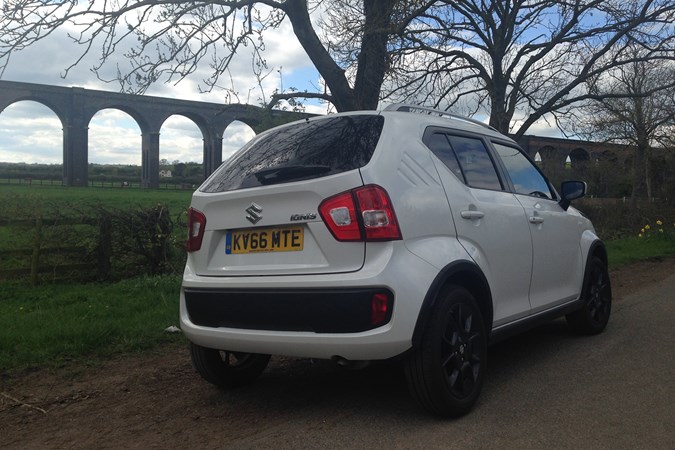
There is a lot of tyre and wind noise, which rather dominates the car the closer you get to 70mph.
The touchscreen Pioneer sat-nav/media unit is rather clumsy. Curiously, it tilts outward, but the screen is blocked by a good centimetre of plastic surrounding, making hitting the screen slightly difficult if you’re on the move; you have to give it more attention than you really should, which is a bad thing.
The sat-nav isn’t great at picking up UK postcodes; I wasn’t looking for a new build housing estate either. The big black square around it adds to the feeling of naffness.
The ride is a bit knotty at low speeds but it soon evens out at speed. There’s actually a really pleasing level of feedback through the steering, far better than many eletric-power-assisted-steering soggy puddings. There is lots of visibility thanks to wide screens and slim pillars – we like that.
In terms of practicality it does have the space, it’s just that we wish it had more pace. The brakes are good and progressive, the clutch light and forgiving and it’s well equipped – there’s a rear-view camera and DAB.
And we still love the looks. It’s spacious in the back, and the boot has enough for a week’s shopping for two people.
It sounds like I don’t like the Ignis, but I do – there’s a great car under all this.
Nathan Chadwick
Mileage: 4,008
Fuel consumption: 42.1mpg
Update 5: Ignis vs Swift
Meet the bigger, more premium brother of our Suzuki Ignis long-termer. Called the Swift, it’s just been introduced in its fifth-generation guise, boasting more space, technology and efficiency than the outgoing model.
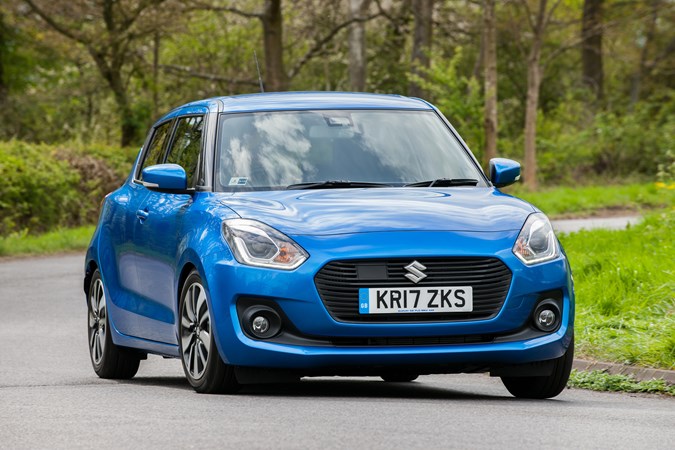
It sounds promising, but how does it compare to the Ignis? After all, some car manufacturers manage to pack so much into their smaller cars that the larger, pricier models in the range end up looking a touch unnecessary.
So in an effort to stoke up some healthy sibling rivalry, we’re pitting our £11,749 SZ-T-spec Ignis against an equivalent Suzuki Swift – priced at £12,999. Is big bro worth the extra cash? Read on to find out.
Equipment
The new Swift is generously equipped in all trim levels, coming as standard with DAB digital radio, Bluetooth phone connectivity, air-con and front electric windows. Mid-range SZ-T spec adds to this with a rear view camera, Apple CarPlay/Android Auto connectivity, 16-inch alloy wheels and front foglamps.
And, best of all, SZ-T trim is only available with the (far superior) 1.0-litre Boosterjet engine.
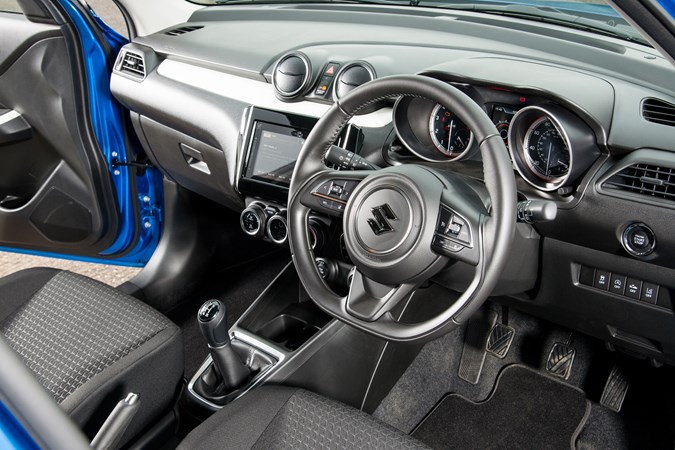
The Ignis, however, isn’t beaten that easily. It matches its bigger brother with standard-fit air-con, DAB digital radio, Bluetooth phone connectivity, a rear parking camera, 16-inch alloy wheels and front electric windows – only falling short with a lack of Apple CarPlay/Android Auto connectivity.
Drive
This is where the Ignis begins to struggle. Even with the inferior 1.2-litre Dualjet engine, the Swift is still significantly better to drive than its sibling, feeling more stable and predictable through bends, while also maintaining higher overall comfort levels. That said, it is a low-slung hatchback, while the Ignis is a small SUV.

Motorway drives are also made far more pleasant in the Swift; its extra bulk and size help produce a calmer, more assured feel while travelling at speed.
Practicality
Boot space wasn’t a strong point of the outgoing Suzuki Swift, and when we heard that the new model would actually be shorter in length we feared the worst.
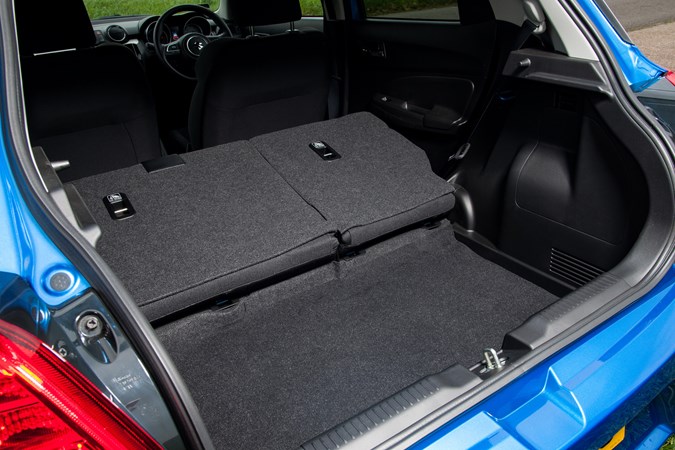
However, Suzuki designers have still managed to carve out a bigger boot (265 litres rear seats in place, 579 rear seats folded down) and, thanks to a longer wheelbase (distance between the front and rear wheels) there’s more space in the cabin, too. It’s still not class leading, but represents an improvement over the old car.
And the Ignis? Well, on SZ-T models there’s 260 litres available with the rear seats in place and with them down (boot space is slightly less with the AllGrip 4x4 system fitted). There’s also excellent headroom in the rear thanks to that high-sided design, while rear legroom is adequate.
Running costs
Despite being heavier and more powerful than the Ignis, the 111hp 1.0-litre Boosterjet engine’d Swift returns identical fuel economy at 61.4mpg. We also reckon that as the Swift’s punchier 1.0-litre engine won’t have to be worked as hard to get up to speed, the real-world figures could even come out in its favour.
Verdict
The Suzuki Swift is £1,250 more than the Ignis, which, at this end of the market is a fairly sizeable figure. Even so, we’d still plump for the former if your budget can stretch to it.
Equipment aside, it is a significantly better-rounded car which we’d feel happier driving in everyday environments. Opt for the Swift and you really are getting £1,250-worth of extra car.
We also reckon that once finance options for the former are announced the difference in price will be far less pronounced, so be sure to keep an eye on the Suzuki website for any upcoming deals.
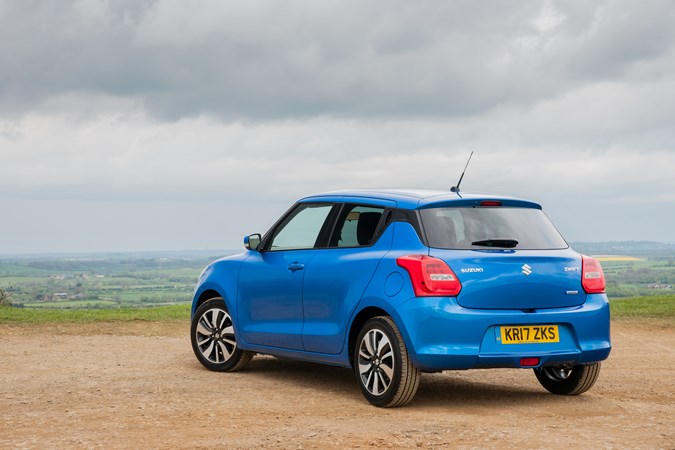
Mileage: 4,783
Average fuel consumption: 50.5mpg
By James Dennison
Opinion poll
It’s taken me a while to finally get behind the wheel of our Suzuki Ignis long-termer, but I’m going to share my thoughts in a later update (spoiler alert: they’re predominantly positive).
The reason for me breaking our scheduling protocol is because of the reaction of a friend, who also works at Parkers’ Bauer Media HQ, when she saw me slipping into the Suzuki for my evening commute: ‘What the hell’s that?’ before adding, ‘and has it been damaged?’ (it hasn’t), as she traced the various bodywork creases with her fingers.
Well, that was a surprise
Perhaps naively, this reaction took me by surprise. After all it’s a small, Japanese city-biased SUV and therefore you’d expect it to look a little madcap. Well, you might if you were either a dyed-in-the-wool car enthusiast or you inhabited a studio flat in downtown Tokyo.
.jpg)
Bauer’s based in Peterborough and, despite the numerous automotive titles based within its walls, most people here have as much interest in cars as I have in watching Hollyoaks (disclaimer: with a pre-teen daughter governing the remote control, I’m finding I have to watch it much more), consequently meaning the majority of folk simply won’t ‘get it’.
I decided to put this theory to the test by stopping people as they poured out of the building at lunchtime, to seek their first impressions of the little Suzuki. Whether it was me loitering with a camera (or that my learned colleagues Adam, James, Sophie and Tom were loitering with me) but a significant proportion of those who stopped by were other car journalists, albeit of a classics persuasion.
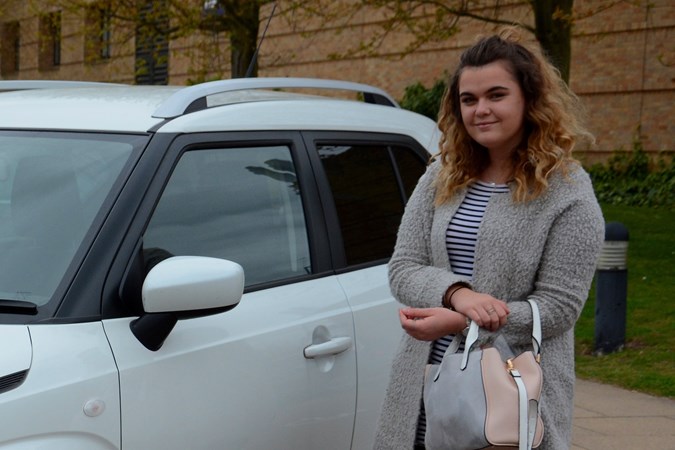
Mollie Porch
‘Ewwww, I don’t like the look of it. It’s like a box. Why is it so ugly?
‘I don’t like those orange bits on the inside either, but the seats look cool. And, I know it’s small, but my Fiesta definitely has a bigger boot.
‘No, not for me. Soooo ugly.’
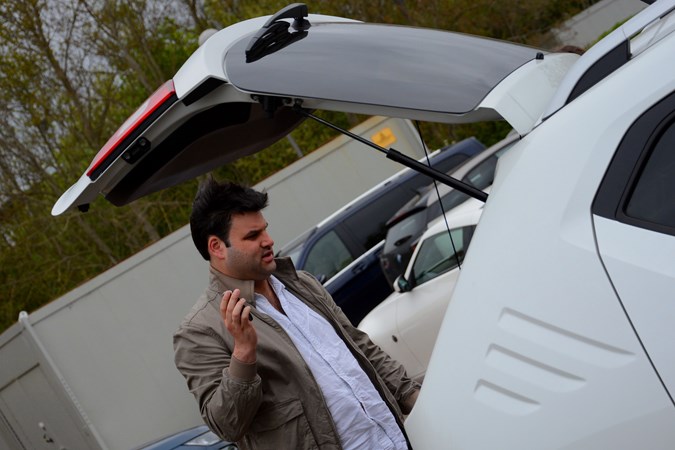
Sam Dawson
‘There’s an impressive amount of space in the back but I don’t understand why they’ve impeded rear vision with some pointless styling.
‘The boot’s spoiled by that high loading lip but at least there’s a proper handle on the tailgate.
‘It’s interesting and I kinda like it, but it references a car visually that hardly anyone knows.’

Murray Scullion
‘Hey, I like this a lot. It’s interesting how it harks back to the “Whizzkid” [Suzuki’s first car in Britain was the SC100 in 1979, known by enthusiasts the Whizzkid].
‘In fact, I like it until I look inside where it looks – and feels – cheap. And orange.
‘Oh and what’s with all of this orange stuff? And blank switches..? Aaaargh!’

Richard Gunn
‘Hmmm, now this I like. Lots of references to the SC100 in its stylish design. It’s distinctive but Suzuki’s late to the retro game.
‘At least you’re not going to confuse it with anything else on the road.
‘It’s spacious but does feel cheap inside. Would be interesting to compare it with a Fiat Panda.’

Tim Berry
‘It’s got rather odd proportions hasn’t it? Erm, no, not sold on the exterior.
‘And it’s very square inside too. The dials look nice but it’d look very 1990s in here without the infotainment screen.
‘Not sold on the seats, either – they feel too flat. No, four-out-of-10.’
And the scores on the doors?
Not the most glowing feedback of Suzuki’s distinctive micro-SUV, but then it is a car that people will have an opinion on because it looks so different.
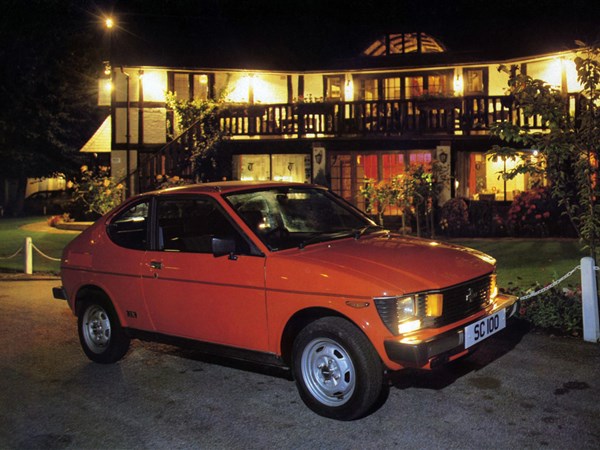
Non-car fans can be excused for not having the faintest idea what the SC100GX (above) – to which elements of the Ignis’s design pay homage – was, but it’s difficult to defend the extent of some of the cheap – and wobbly – plastics furnishing the interior.
An uplift in quality come facelift time is the least the Ignis deserves.
Keith WR Jones

Update 6: Camel on the highway?
Some internal shuffling around of cars means our long-term Suzuki Ignis has acquired a new owner. Steve ‘Percy’ Lawman, Parkers Senior Product Content Manager, has taken on the reins of putting our small city car through its daily paces.
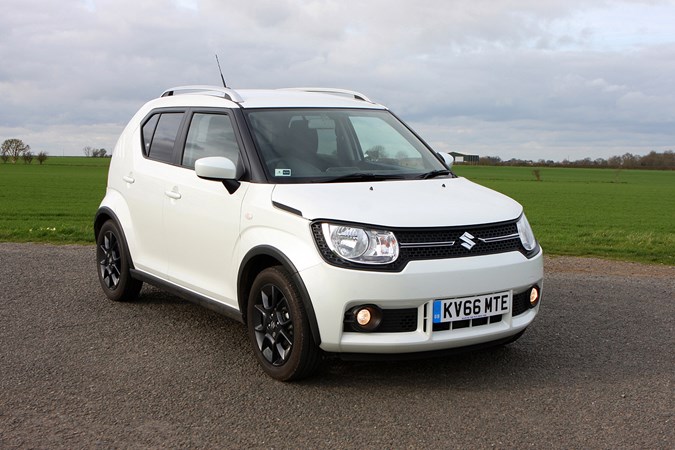
Visiting our local town, which has limited parking areas, the Ignis proved an exceptional asset. Its small overall length of just 3.7m made parking in tight areas a fairly straightforward affair. It’s very much at home on narrow streets and car parks where the given space for parking is quite small.
The turning circle is also quite tight giving easy access to even the smallest of gaps. This makes manoeuvring in and out of small tight spaces a simple affair.
Good sized boot
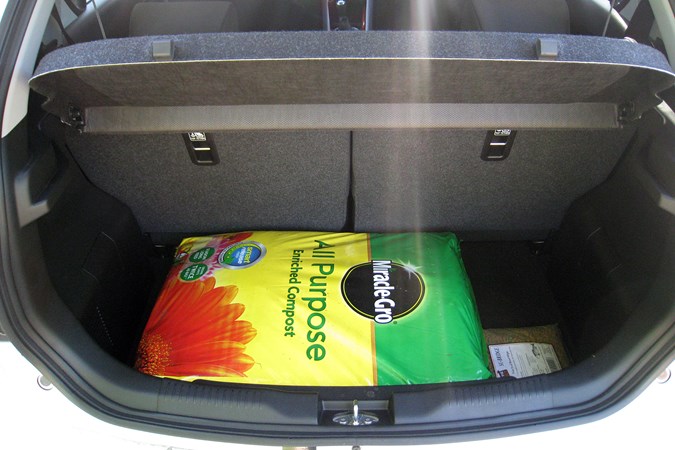
The boot on the Ignis is surprisingly large given the overall size of the car. A trip to a local garden centre produced two 50 litre bags of compost which barely took up a third of the boot. We could have loaded in another three or four bags of the same with ease.
It was a similar experience while on a shopping excursion. The generous amounts of space on offer easily accommodated eight large shopping bags with room to spare.
As an additional exercise, we decide to load the Ignis with some serious luggage. Various suitcases and travel bags were assembled and we were highly impressed as the Ignis seemed to take in the load with ease.
Camel of the highway
While we’re not going to be sending the Ignis off to the nearest desert in a hurry, it seems to relish running on fumes. During my first couple of fill ups the reported consumption came back as 71.3 and 70.1mpg based on various local and semi-local trips which totalled around 400 miles. On paper this exceeded the factory spec of 61mpg by around 15%.
If this is anything to go on (and if it’s correct), the Ignis might be capable of doing the 864 miles from Land’s End to John O’ Groats on around 57 litres of fuel (maybe I should try it!). We’ll look further into the consumption figures and report back our findings in future updates.
Mileage: 4,628
Average fuel consumption: 48.7mpg
Update 7: Drive it like you stole it…
New owner Percy Lawman turns his back for a moment, and Parkers Editor Keith Adams grabs the keys of the Ignis. He’s done nothing good for the economy figures…
I love low-powered cars. Cars that can make great progress, but make you work for it. The Suzuki Ignis is one of those cars – thanks to its free-revving Dual Jet engine, direct steering, and entertaining suspension set-up.
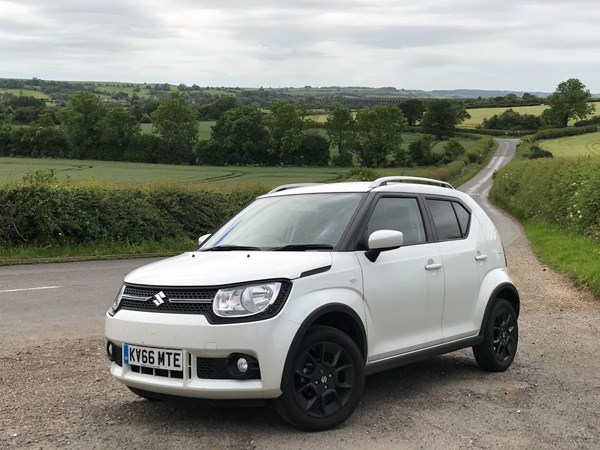
Recently I needed a car to hack down to the airport and back in, keep for the weekend, and then do another airport run in. Percy had decided to take pictures of one of our other cars on test – perfect opportunity to take our bargain-priced champ for a run.
No regrets
I’m so glad I did. As soon as I was back in the Ignis, I remembered what it was about the car which had won me over the first time I drove it earlier this year. It’s good, clean, basic fun – you get the essentials, such as air-con and a decent stereo with sat-nav, and more head- and legroom than many executive cars costing much, much more.
Whizzing down the A1 and towards London, it had no trouble keeping up with the big boys, and exiting roundabouts – it’s nice to be in a car where you get the chance to use full throttle for more than a millisecond. It revs freely, sounds great when extended, and yet settles down to a calm motorway pace.
By the time it’d negotiated the M25 and swung into Heathrow I found myself brushing over a few little annoyances and realising I’d stolen Percy’s car. To be honest, it’s more like taking your 18-year-old son or daughter’s car – you shouldn’t like it, and yet you do…
After a week away, jumping back into it and mixing it with the London traffic was a fun experience. You sit quite high, and the view out is good, so it’s a car you can wrestle with the jams in confidence. Helps that it’s narrow, too… Plus, isn’t it nice to drive a nice, simple, revvy petrol-powered car these days?
Sure you want it back, Percy?

Update 8: 530.1 miles from a tank of fuel…
Just to refresh your collective memory, in the early part of the year I made two fill-ups that our trip computer suggested had reduced the Ignis’s thirst for unleaded: fuel consumption went from 50mpg to just over 70mpg.
That’s pretty good in anyone’s book, especially when the manufacturer has a quoted figure of 61.4mpg for the combined cycle. Given this I decided to perform a more accurate fuel consumption check.
The Ignis was brimmed and the trip counter reset. From here only one driver (me) used the car and an accurate daily log of mileage-versus-consumption was kept. The aim was to travel as far as humanly possible on one tank of fuel.
How did you do the test?
Journeys were made from home to work and back again, which is a 26-mile round trip commute that includes a mixture of single-carriageway A- and B-roads, with a maximum speed limit of 60mph.
Most days also included a stop-start section for about a quarter-mile of congested traffic, plus a 10-minute wait to clear the car park at the end of the day.
There were occasional trips to the local town and two longer distance jaunts of around 60 miles each. On the two longer-distance runs the car had one additional passenger (80kg) and one small bag (5kg). The commuter trips just had the driver (86kg), no passengers and no luggage.
Range indicator causes anxious moments
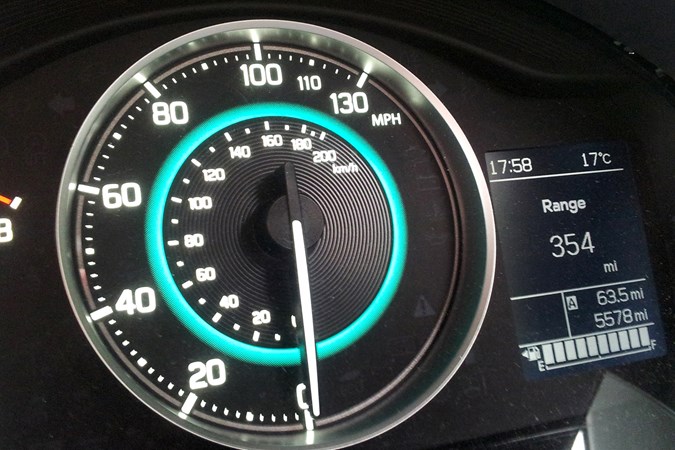
On the initial fill-up I immediately had reservations on what the outcome would be as the range indicator on the dash read an unimpressive 345 miles. This didn’t inspire much confidence.
Nevertheless, given the 61mpg official manufacturer figure, I thought I might manage just over the 400-mile mark.
As the miles notched up I began to notice a shift in the way the range indicator worked. On some occasions after an overnight rest, I gained 30 miles or so for no apparent reason. On some journeys I’d lose five or 10 miles without really covering any distance.
I came to the conclusion it could only really be used as a guestimate.
Saying that, it was always on the positive side so there would be no excuse for the driver to run totally out of fuel. This was backed-up when the range hit zero and failed to register any fuel-reading at all at the around the 450-mile mark.
At this stage, it was like playing a waiting game. At the 500-mile point, I moved to cruising on the back roads expecting to come to a standstill very soon.
A breath of fresh air
At the massive total of 530.1 miles, and with a final gasp for fuel to inject life into itself, the engine turned itself off – but what an exceptional result.
Our ready reckoner came back with 81.9mpg, but even after allowing a litre or so in the downpipe (as we did brim the tank) our records showed an overall combined fuel cycle of around 75mpg.
So what’s next? I’m conscious that this exercise was a combined driving cycle with a varied mix of road and traffic conditions. I wouldn’t be surprised if the Ignis could potentially break the 80mpg mark on a longer extra-urban run at less than 60mph with reasonable traffic conditions.
Given the data, a run from Land’s End to John O’Groats could potentially be achieved for less than £60-worth of fuel. Dare I chance it…?

Ignis fuel data
By Percy Lawman
Update 9: Finance options and Future Residual Values
In one of our earlier updates (Update 5), we pitched the Ignis up against its larger stable companion, the Suzuki Swift. Here I’m teaming up with our resident finance expert Christofer Lloyd to see what finance deals are available on each car.
Is the Ignis the car of choice or does the extra £1,000 outlay for the Swift make it a better overall proposition?
Should I buy an Ignis or a Swift?
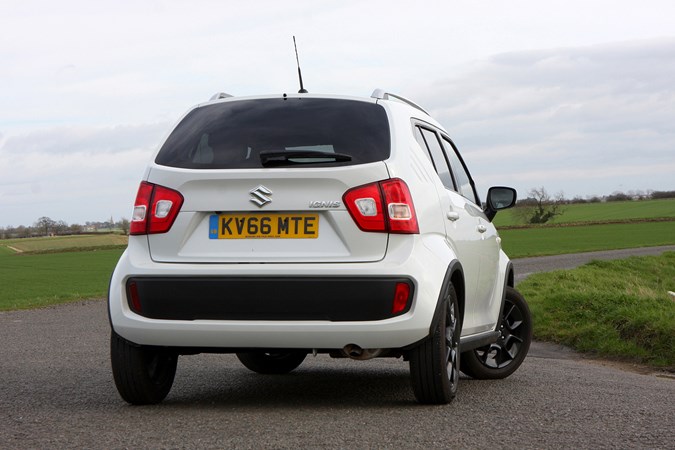
Despite its higher list price, the Swift is by far the better-value option if you opt for PCP finance. The Swift will cost you just £191 per month (on a three-year, 10,000-mile-per-year contract with a £1,000 deposit), compared with £207 per month for the Ignis.
Better still, you get a more powerful turbocharged petrol engine with the Swift, which makes it a wiser choice if you regularly drive on A-roads and motorways.
Interest charges are much higher on the Ignis (with 5.9% APR against 2.9%) – and you get a £500 deposit contribution discount on the Swift.
This means that if you plan to hand your car back at the end of the contract and get a new one, you’d be more than £560 better off with the Swift overall. Buy the cars at the end of the contract, meanwhile, and you’d have paid less than £250 in interest on the Swift compared with £1,427 for the Ignis.
You have to REALLY want the Ignis
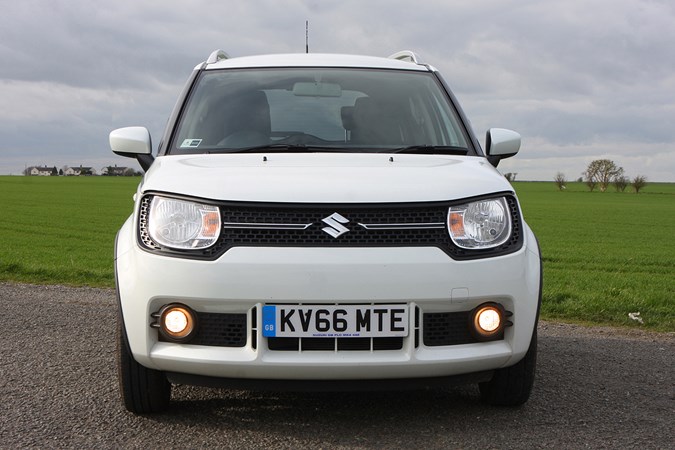
Notably, the Swift is exactly the same price as the closely matched Skoda Fabia 1.0 TSI 95 SE equivalent – which itself is extremely good value on PCP finance. With these two appealing options, though, you have to really want the Ignis to warrant spending an additional £16 each month.
If you’re looking to pay cash for your car rather than going for finance, one of the most important factors to consider is what the car will be worth in say three or five years’ time – when you’re thinking of selling the car on.
The term is referred to as the Future Residual Value (or FRV as it’s commonly called in trade circles).
A car which retains a higher percentage FRV is generally considered a better investment. Figures quoted below are over a five-year period for a new car based on 10,000 miles per year average.
Here we have compared our Ignis to an equivalent SZ-T trim Swift which has the more desirable 1.0 Boosterjet engine.
Suzuki Ignis 1.2 Dualjet SZ-T 5 door manual
Original New Price – £11,804
Year 1 (10,000 miles covered) – £6,950. FRV 59%
Year 2 (20,000 miles covered) – £5,800. FRV 49%
Year 3 (30,000 miles covered) – £5,125. FRV 43%
Year 4 (40,000 miles covered) – £4,325. FRV 37%
Year 5 (50,000 miles covered) – £3,475. FRV 29%
Suzuki Swift 1.0 Boosterjet SZ-T 5 door manual
Original New Price – £12,804
Year 1 (10,000 miles covered) – £8,400. FRV 66%
Year 2 (20,000 miles covered) – £6,950. FRV 54%
Year 3 (30,000 miles covered) – £5,625. FRV 44%
Year 4 (40,000 miles covered) – £4,575. FRV 36%
Year 5 (50,000 miles covered) – £3,675. FRV 29%
There’s not much in it between the two cars but the Swift retains more of its value in the first two years. After year three everything is fairly even. However, in cash terms, you’re only going to recoup half of the £1,000 premium for the Swift over the Ignis after three years.
So, if you plan to keep your car for more than three years, you’ll pay less in depreciation with the cheaper Ignis. Remember, though, that this Swift has a more punchy engine, so if that’s important to you, it could be worth the extra.
Data source CAP/HPi August 2017 data set.
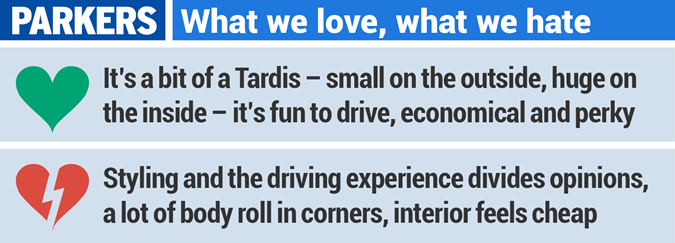
By Percy Lawman and Christofer Lloyd
Update 10: Land’s End to John O’Groats Fuel Challenge
- 2201 miles in 3½ days with 100% reliability
- 10 extra-large Cornish pasties and a tub of clotted cream also make the trip (could this be a first?)
Suzuki Ignis becomes an ‘End-to-Ender’ (See the certificate!)
Report by Steve ‘Percy’ Lawman:
Well the single driver fuel consumption test got the better of me, it was time to put our little city car into uncharted territory. Having taken our VW Crafter van to John O’Groats in the spring time and the fabulous mile-munching Skoda Superb Estate to Land’s End in June, I had no choice but to try and push our mega-frugal Ignis over the 80mpg barrier combining both locations.
So loaded with little more than a couple of spare fuel cans and eight packets of Cheese and Onion crisps, I planned to become an End-to-Ender together with my SUV partner.
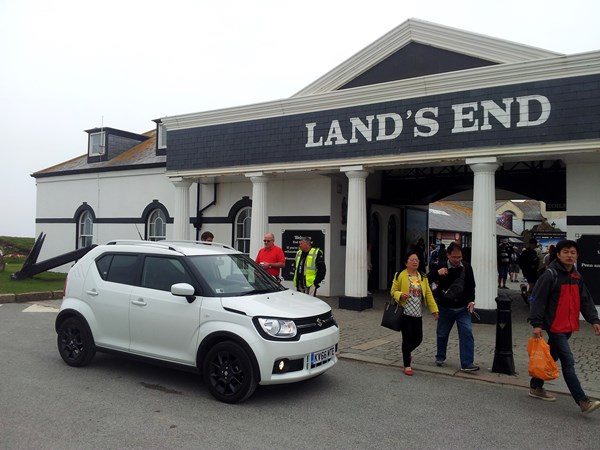
Dash to Exeter (262 miles)
Wednesday afternoon – current location Peterborough; destination Exeter for an overnight stay. This would then fit in well with the plans to be in Looe early on Thursday morning before driving on to Land’s End and arriving just after lunchtime. OK, we chose ‘Looe’ because we knew of a fabulous pasty outlet there and the team would never forgive me if I returned empty handed!
Before leaving Peterborough I three-quarter fuelled-up the Ignis, with the intention of arriving at the nearest filling station to Land’s End (St Buryan) on fumes. St Buryan is about five miles from Land’s End and the previous consumption test revealed the car was doing just under 16 miles to the litre – so I had a benchmark to use.
I also carried three five litre cans of spare fuel (filled with 5, 3 and 2 litres respectively) as I expected to run-out in order to obtain accurate figures.
I reset the trip counter and headed off via the A605, A14 then M6 and M5 to the South West.

Thursday: A long 17.5-hour day – Exeter to Land’s End to Lancaster (145 + 421 miles)
A start at 09:00 am saw the Ignis make the 145 mile journey from Exeter to Land’s End. I added some weight to the car with a few Pasties at Looe and arrived within 15 miles of the St Buryan filling station when the car ran out of fuel. This was good as it aided the calculations meaning that one litre would get me to the filling station ready to brim the car for the main run.
As luck would have it, this was a pretty close call. I spied the filling station and almost immediately the engine died and the Ignis glided into the filling station stopping right next to the pump. We can safely say the car was totally empty.
A brim-level fill was actioned and the car happily guzzled 33.63 litres costing £39.99 (£1.189/litre). I then drove the additional five miles and was at the Land’s End visitor centre by 13:00. At the visitor’s centre I obtained the various End-to-Enders information sheets and duly got the official stamp from the hotel. A handful of photos also accompanied the session including an official photo at the Land’s End signpost. With all the formalities completed I was ready for the off around 14.30.

The plan was to route A30 to Exeter, then M5/M6 to Birmingham and the North West (Lancaster), at a speed of around 50-55mph with bursts to 60 trying not to hold anyone up.
Routing up the A30 saw Exeter pass at 17:30. At this early stage, the fuel gauge had dropped one bar after covering 121 miles and with 421 indicated miles remaining. From previous experience the range indicator could not be heavily relied upon so I was more interested in checking the fuel gauge to get an idea of how things were.
As the evening progressed, the Ignis passed Bristol. By 20:00 I grabbed a stop for an hour and checked for road problems and delays flagged up by the navigation system around Birmingham.
It was apparent that there were some heavy roadworks around the M6/M5 area: a 21-mile detour re-routed the Ignis east via the M42 and then back onto M6 northbound. The M6 was then slow around Birmingham and bumper-to-bumper around the Stafford area (even at midnight), so another re-route occurred heading A5 west and then towards Newcastle-under-Lyme on the A41/A519. It extended the journey by another 15 miles but the A-road routes were clear and free of traffic. It did however add another 45 minutes on the time log.
As I re-joined the M6 the fuel gauge had dropped a further three bars and was now showing around half full. Everything was looking good, but how would consumption span-out once we had a few Highland roads to contend with?

The cruise continued North and the traffic started to thin out as I passed the M62 turn-off and, as expected, I arrived at Lancaster at 02.30am Friday morning with three bars of fuel remaining. It was a bit later than originally planned but the car was performing exceptionally well with 600 miles on one tank being a definite possibility.
Given the initial 530 mile tank range confirmed in Update 8, the original estimate was to achieve ‘Elvanfoot’ which is about 54 miles north of Carlisle on the M74.
Using Google maps, the distance is shown as 530 miles from Land’s End – so it’s a good indicator. However, I had to endure some detours that had added about 36 miles to the route. Taking in the additional mileage we now thought that it would be good to reach just south of Lockerbie.
Friday: Lancaster to John O’Groats (436 miles)
A not so early start today, but after a hearty breakfast it was time to complete the last official leg of the trip. Setting off at around 09:30 I headed north routing M6/M74. The idea was that at some point the car would cough, wheeze and run dry. Being on a motorway gave me the option to easily pull over onto the hard shoulder and not cause any issues to other road users.
Passing Lockerbie the fuel indicator showed one bar remaining, so how much further could we go? Expecting to run dry very soon, the Ignis cruised into Hamilton services (Glasgow) on the M74 with the engine still running albeit with the low fuel warning light frantically flashing. On the dashboard the trip distance read 594.1 miles covered. The estimate was that there was about 10-15 miles remaining in tank so we can say the tank has a 600-mile range – a pretty good result all-round.
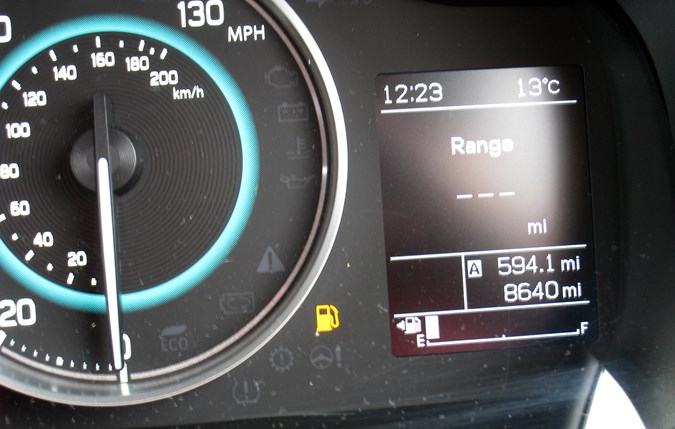
I was eagerly wanting to bust over the 600 miles on a tank but bowed out, erring on the side of caution preferring not to run out in a busy city area of motorway.
Out came the calculator at Hamilton and some frantic calculations of the story so far.
Land’s End to Hamilton (Glasgow) Fuel Log
- St Buryan (5 miles from Land’s End) – 33.63 litres (7.39 gallons) @ £1.189p/litre (£39.99)
- Total miles covered – 594.1
- Miles per litre – 17.84
- Miles per gallon – 80.37
The estimate was that, based on the current consumption, I’d require another 16-17 litres to get to John O’Groats. I put in 17 litres knowing there was spare fuel on-board.
Hamilton (Glasgow) to John O’Groats Fuel Log
- Hamilton (Glasgow) – 17 litres (3.73 gallons) @ £1.229/litre (£20.89)
- Hamilton – John O’Groats – 291.2 miles
- Miles per litre – 17.12
- Miles per gallon – 78.06
John O’Groats – Arrival
I cruised into John O’ Groats at around 19.30 on the Friday evening. The car had done a fabulous job all the way. The formalities of getting our ‘End-to-Enders’ documentation in order had to wait until the Saturday morning so it was a brief run to Thurso for a well-deserved beer and a bite to eat.
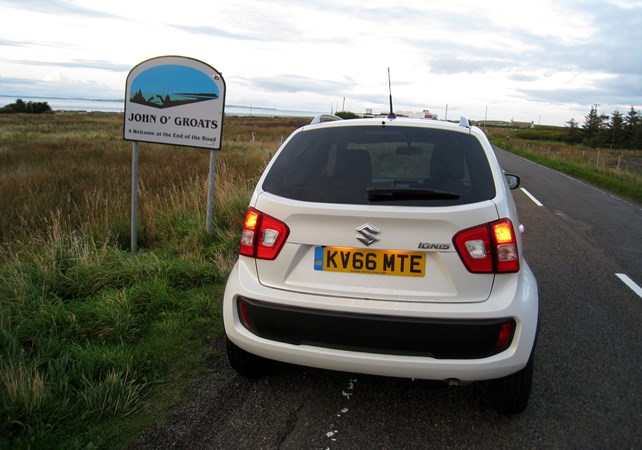
Leaving John O’Groats the Ignis travelled another nine miles before running dry just before Dunnet. As it was very quiet around the area, refilling from a jerry can on a very desolate A836 was not really a problem.
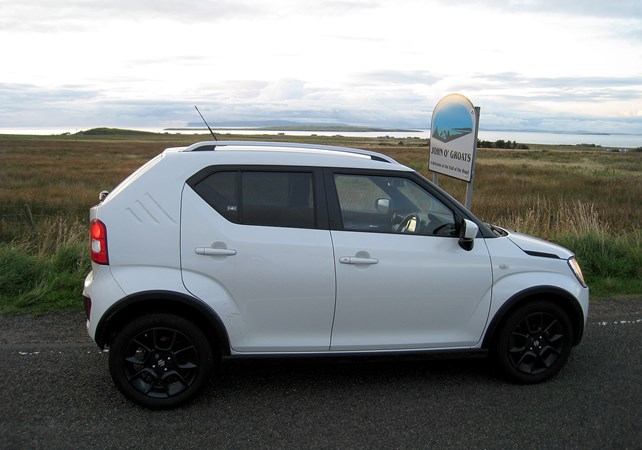
Land’s End to John O’Groats summary
- Total miles travelled Land’s End to John O’Groats (including addition re-routings) – 885.3
- Total miles travelled Land’s End to John O’Groats (including addition re-routings and the final nine miles) – 894.3
- Total fuel used – 50.63 litres
- Total fuel used – 11.12 gallons
- Total fuel cost – £60.88
- Total miles per litre average (includes addition re-routings and the final nine miles) – 17.66
- Total miles per gallon average (includes addition re-routings and the final nine miles) – 80.42
Saturday : Thurso to John O’Groats then Peterborough (712 miles)
Back south today with the plan to go from Thurso (the overnight stopover) via Inverness, Perth and Edinburgh (A1) to Peterborough.
A quick stop-off at a local butcher in Thurso produced a heap of Scotch pies and the best Scotch eggs you’ve ever tasted (thanks to Bews Butchers). I then drove back to John O’Groats to get the required ‘End-to-Enders’ stamps plus a few photographic souvenirs. All formalities over it was back south to Inverness via the A99/A9.

An incident on the main A9 south of Inverness indicated delays of over an hour so a re-route via Aberdeen, Dundee, over the Tay Bridge, A92 to Edinburgh and A1 was quickly put into action. This is a really nice drive albeit a long one, especially in a single run. The route is over 700 miles and took 16 hours and 12 minutes but runs through some impressive countryside and locations crossing numerous rivers and bridges.
In summary – Ignis as long-distance car
We’ve seen here how this small city-themed SUV can be an extremely competent long distance traveller. While it’s never going to hit light-speed, the Suzuki Ignis was absolutely faultless during its 2201-mile jaunt from one end of the country to the other and back again, proving to be 100% reliable and more than capable of stretching its legs; provided of course you’re not in a real hurry. Even on some of the higher roads through Cornwall and into the Scottish Highlands, the Ignis worked well cruising at or below the agreed 60mph throughout the journey. Given the outlay on fuel (£60.88) we think that’s excellent value motoring to cover this distance and hat’s off too for the 100% reliability record not once missing a beat.
It’s worth mentioning that the trip was completed with one adult on board and one small lightweight bag of luggage. Additional items such as spare fuel (and pasties) made up the remaining luggage.
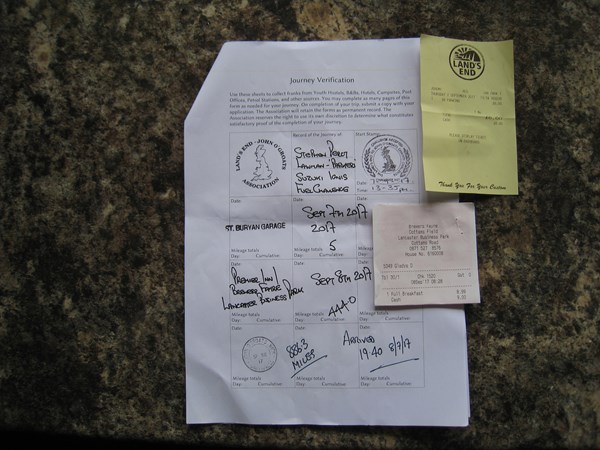
Doing the same journey with four people and a full boot may well prove a little more difficult task. The Ignis is still fairly happy with only two occupants and a light load but the additional weight of two extra people and luggage will certainly give the 1.2 engine something to more think about. I was very surprised on how comfortable the journey was. I was expecting a bit of a bum-numbing experience but that was not the case. Sitting in one position hour after hour can make you feel uncomfortable but the Ignis proved to be more than adequate over longer distances.
The proof

Check out my end-to-end journey here on Google maps.
By Percy Lawman
Update 11: What about the competition?
- Our Ignis faces one of its toughest challenges
- Tom Goodlad sees if the Ignis can man-up to the Kia Picanto
Fresh from its epic trip to all ends of the UK, we’re not making life easy for our little Ignis – as it meets the new Kia Picanto to see how it compares with one of the newest, most highly-rated city cars to hit the road.
Why the Picanto?
Despite its SUV look, the Ignis is still just a dinky city car, and as such opens it up to a huge amount of competition, but we’ve picked the Picanto as it’s one of the newest city cars currently on sale.
They’re not the most direct rivals in terms of look and price, but they’re both designed to work well in the city and offer distinctive looks, but with different approaches to styling.
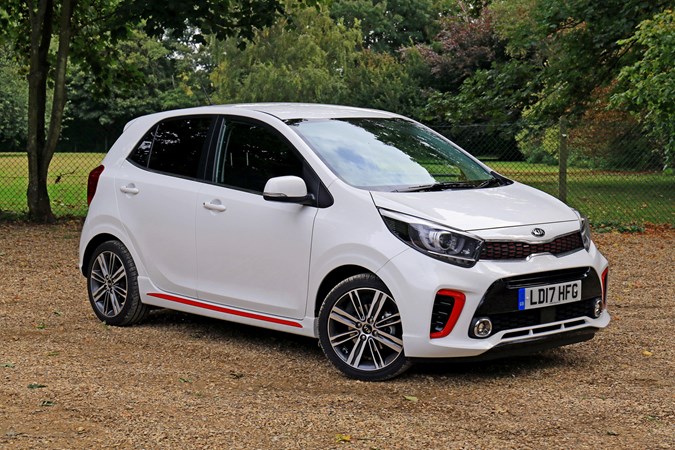
Styling
Beauty is in the eye of the beholder, but these two city cars certainly stand out. The Picanto – in GT-Line spec – looks like an angry little bruiser with an aggressive front end, bodykit, large alloy wheels and plenty of red detailing to make it stand out.
The Ignis however, is a little more awkward. It’s proving to be something of a Marmite-style car when it comes to looks with us in the Parkers office. Some think it looks awkward and boxy, while others think its Tonka-truck styling is a stroke of genius. We’ll let you make your own minds up…
However, there’s no denying that they’re both distinctive in their own right. The Picanto is probably the more sophisticated and cohesive, but there’s no denying how much attention the Ignis is capable of receiving – good or bad.
What’s the drive like?
Things become a little more clear cut when you get behind the wheel. The Picanto feels more like a normal city car – in fact it feels like a larger car thanks to a grown-up interior and good driving position. Jumping in to (more like on to) the driver’s seat of the Ignis presents a very different feel.
You sit higher up on the squashy seat, which offers little in the way of support. Things can get quite wayward in the bends in the Ignis because of this and the body roll, but the direct steering actually makes it quite good fun. There’s something quite enjoyable about hurling the Ignis into a bend. It’s so lightweight and you can enjoy revving the nuts off its little 1.2-litre petrol.
The Picanto is a very accomplished car handling-wise. The steering suffers from similar issues as other city cars in that it’s very light and there’s little in the way of feel, however body control is very impressive, as is grip, making it a really chuckable little car. The manual gearbox is precise too, whereas the Ignis’s is quite vague and notchy.
Value for money
If we take these cars spec-for-spec, the Ignis looks much better value than the Picanto. At £11,499 for our 1.2-litre SZ-T, it undercuts the Picanto by about £1,000.
They both come with a decent haul of standard equipment (the Ignis comes with more), and it also feels a little more lively than the Picanto on the move.
Add to that the extra space on offer (headroom is particularly impressive in the Ignis) and it starts to look like a win for the Suzuki.
.jpg)
Which is best?
For some, the Ignis will be the best option with rugged appeal (you can get AllGrip four-wheel drive), plenty of space, a decent list of standard equipment and low list prices.
We’ve also shown that it can be more economical than you first expect, however it’s those looks that make or break the Suzuki’s appeal. For some, it’ll be a little too wacky, which is where the sportier look of the Picanto helps it pull ahead.
The more grown-up feel of the Kia, seven-year warranty, higher-quality interior and better drive help it to edge ahead of the Suzuki. But at the end of the day, it’s just nice to see that there’s a growing variety of cars to choose from that don’t all look the same in the smallest section of the new car market. Hats off to Suzuki for being brave with the Ignis and well done to Kia for not being boring. They’re both excellent city car options.
Update 12: Goodbye and big hugs to my city mate
It’s not everyone’s cup of tea when you first look at the Ignis, but running one daily for six months and putting it through a pretty gruelling routine has swayed mine and many other opinions.
Colleagues here at Bauer had mixed feelings over our ‘Marmite’ city-car with some being quite dismissive about its capabilities, but after a 2,200 mile jaunt from Land’s End to John O’Groats the feedback has distinctly changed.
Proving that it’s more than capable to rise to the challenge set, the Ignis went from one end of the country to the other and real-world tested a fuel economy of over 80mpg.
The ‘End-to-End’ certificate was a rubber-stamp of the car’s achievement and given its 100% reliability rating this is one car that really excels.
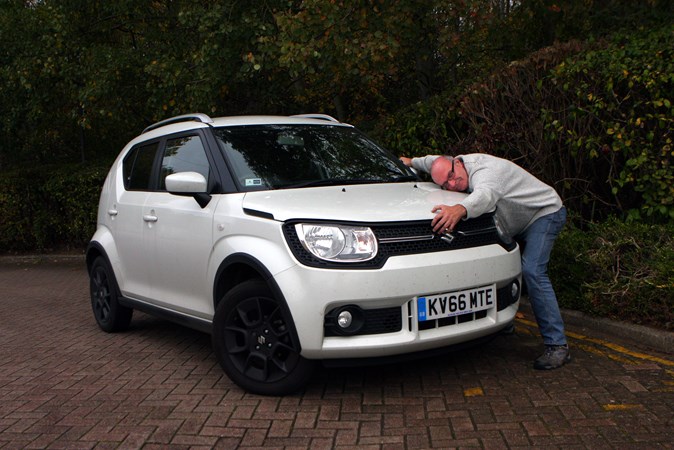
It’s small and compact but very roomy and can be extremely frugal when not driven hard. There’s enough boot space for quite a few shopping bags and parking in small spaces is a real doddle. It’s happy both in-town or on the open road providing you’re not in too much of a hurry.
In summarising I found it a pleasure to live with being an impressively functional car.
Outstanding!
Mileage: 11,005
Final Fuel consumption: 61.6mpg



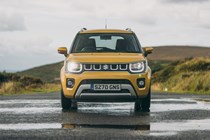
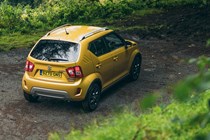
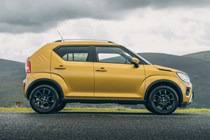
.jpg)
.jpg)
.jpg)
.jpg)
.jpg)
.jpg)
.jpg)
.jpg)
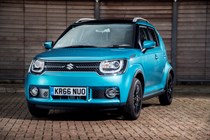
.jpg)
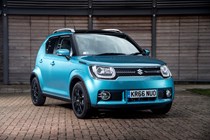
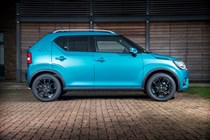
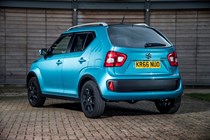
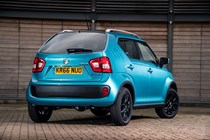
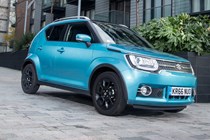
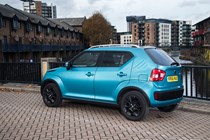
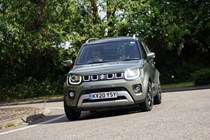
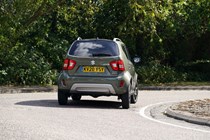

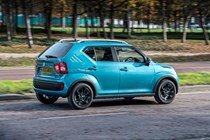

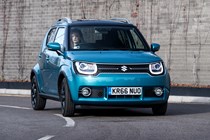
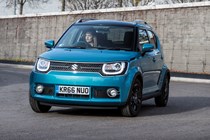

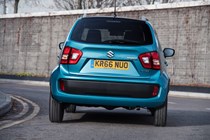
.jpg)
.jpg)
.jpg)
.jpg)
.jpg)
.jpg)
.jpg)
.jpg)
.jpg)
.jpg)
.jpg)
.jpg)
.jpg)
.jpg)
.jpg)
.jpg)
.jpg)
.jpg)
.jpg)
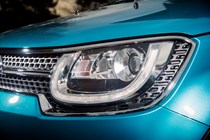
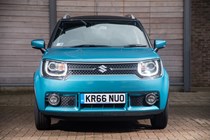
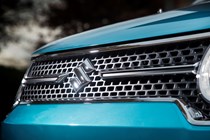
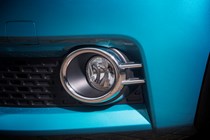

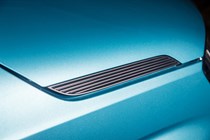
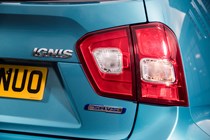
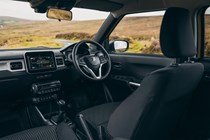
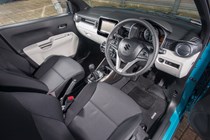


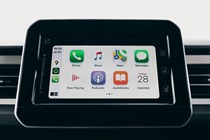
.jpg)
.jpg)
.jpg)
.jpg)
.jpg)
.jpg)
.jpg)
.jpg)
.jpg)
.jpg)
.jpg)
.jpg)
.jpg)
.jpg)
.jpg)
.jpg)
.jpg)
.jpg)
.jpg)
.jpg)
.jpg)
.jpg)
.jpg)
.jpg)
.jpg)
.jpg)
.jpg)
.jpg)
.jpg)
.jpg)
.jpg)
.jpg)
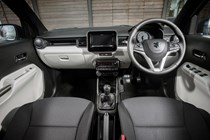
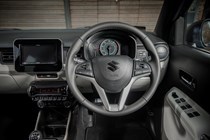

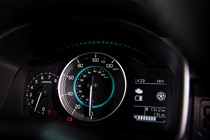
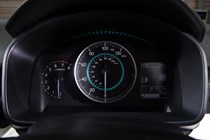
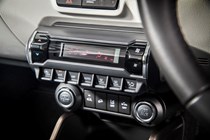
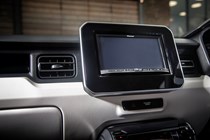
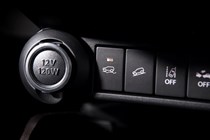
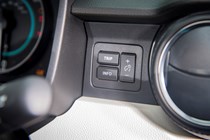

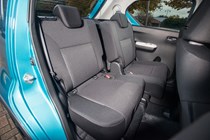
.jpg)
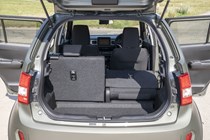
.jpg)
.jpg)
.jpg)
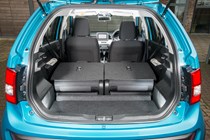
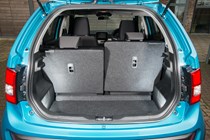
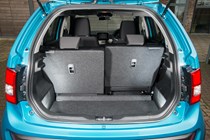
.jpg)
.jpg)
.jpg)
.jpg)
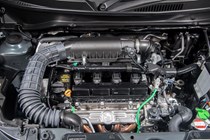
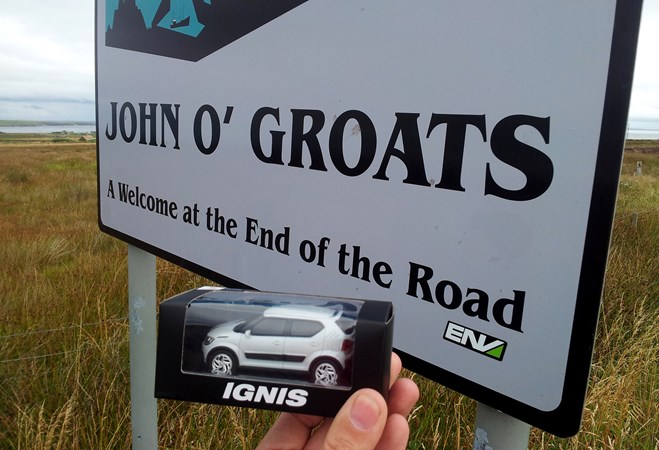




.jpg?quality=50)
.jpg?quality=50)
.jpg?quality=50)
.jpg?quality=50)
.jpg?quality=50)
.jpg?quality=50)
.jpg?quality=50)
.jpg?quality=50)

.jpg?quality=50)















.jpg?quality=50)
.jpg?quality=50)
.jpg?quality=50)
.jpg?quality=50)
.jpg?quality=50)
.jpg?quality=50)
.jpg?quality=50)
.jpg?quality=50)
.jpg?quality=50)
.jpg?quality=50)
.jpg?quality=50)
.jpg?quality=50)
.jpg?quality=50)
.jpg?quality=50)
.jpg?quality=50)
.jpg?quality=50)
.jpg?quality=50)
.jpg?quality=50)
.jpg?quality=50)












.jpg?quality=50)
.jpg?quality=50)
.jpg?quality=50)
.jpg?quality=50)
.jpg?quality=50)
.jpg?quality=50)
.jpg?quality=50)
.jpg?quality=50)
.jpg?quality=50)
.jpg?quality=50)
.jpg?quality=50)
.jpg?quality=50)
.jpg?quality=50)
.jpg?quality=50)
.jpg?quality=50)
.jpg?quality=50)
.jpg?quality=50)
.jpg?quality=50)
.jpg?quality=50)
.jpg?quality=50)
.jpg?quality=50)
.jpg?quality=50)
.jpg?quality=50)
.jpg?quality=50)
.jpg?quality=50)
.jpg?quality=50)
.jpg?quality=50)
.jpg?quality=50)
.jpg?quality=50)
.jpg?quality=50)
.jpg?quality=50)
.jpg?quality=50)











.jpg?quality=50)

.jpg?quality=50)
.jpg?quality=50)
.jpg?quality=50)



.jpg?quality=50)
.jpg?quality=50)
.jpg?quality=50)
.jpg?quality=50)
